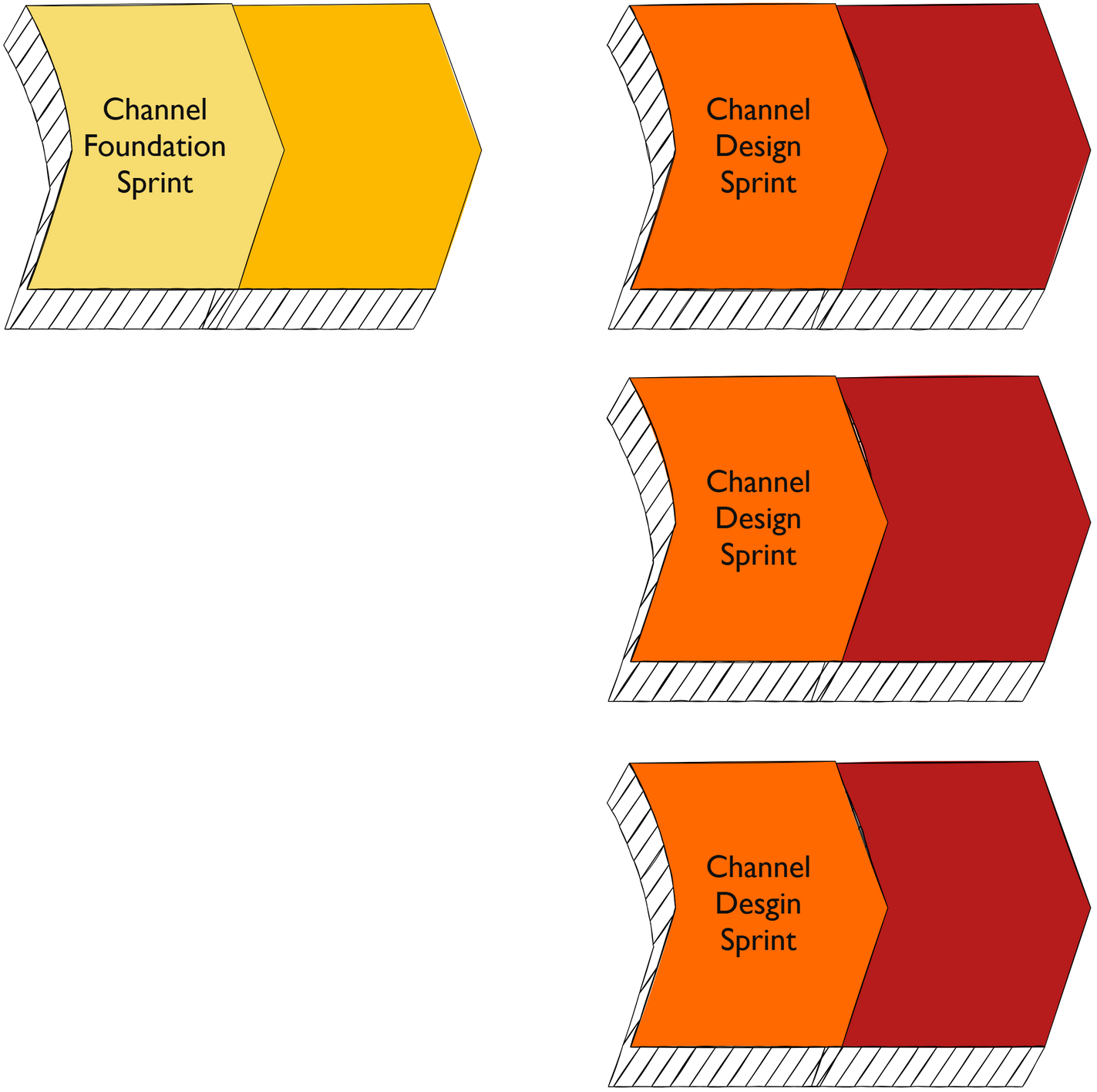
A Strategy Sprint provides a clear long-term goal, a measurable success metric, a set of validated strategies (concepts), and a simple roadmap showing major initiatives over time. This outcome sets the essential “North Star” and immediate next steps for the organization. Building upon this strategic foundation, a partner or channel planning sprint based on TLP’s established 5 Step Channel strategy defines and validates channel strategies and their execution.
The Channel Foundation Sprint is a two-day workshop designed to explore the roles partners will peform, the types of partners which will execute the strategy and the role, if any, of distribution.
- Objective: To align a cross-functional team on a clear, differentiated partner strategy, resulting in a testable Channel Hypothesis.
Employing Channel Design Sprints for Channel Execution & Validation
Once the Channel Foundation Sprint has yielded a clear, testable Founding Hypothesis for the channel strategy, a Channel Design Sprint becomes the ideal tool to rapidly prototype and test specific elements of that strategy.
- Objective: To rapidly build and test realistic prototypes of channel-specific elements – joint value proposition, compensation models – with real users (e.g., partners, internal sales teams, end-customers) to get fast answers and validate effectiveness before significant investment.
- Cross-Functional Teams: Essential for both Channel Foundation and Channel Design Sprints, including representatives from product, sales, marketing, and potentially legal or finance, to ensure diverse perspectives and build consensus.
- The Decider: A single person with the authority to make final decisions is crucial to prevent endless debates and ensure the sprint maintains momentum and reaches a clear outcome.
Post-Sprint: The output of these sprints naturally leads to the next steps. For example, a “Risk Roadmap” can be created to plan future experiments and validations. Regular follow-up check-ins (e.g., bi-weekly or quarterly) are recommended to review progress and adjust strategies based on new information.

